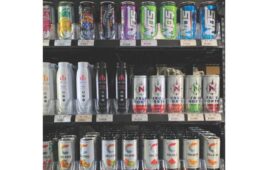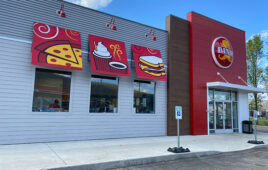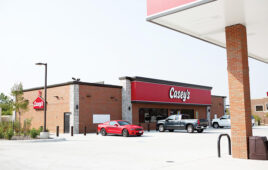 Should your convenience store embrace third-party, aggregated delivery services? As the pandemic stretches on, it’s time to re-examine the pros, cons, risks and costs.
Should your convenience store embrace third-party, aggregated delivery services? As the pandemic stretches on, it’s time to re-examine the pros, cons, risks and costs.
Could the pros of paying others for delivery services, ostensibly justified in net-new incremental sales, be far outweighed by the cons of unknowingly donating your SKU-level sales data to third-party intermediaries that use it to their own gain?
Understanding how they use this data is paramount to updating your own distribution strategy and reducing the risk and cost of supporting these services, if at all.
As with home buying, the top three differentiators for convenience stores are timing purchase and traffic patterns with their ‘location, location, location’ (which is the alpha and omega for defining any distribution strategy).
For the 81% of convenience stores supporting it, fueling is the driveway to their location advantage, putting potential customers less than 15 to 45 feet of a door-swing to their convenience store.
A convenience store’s location advantage is further bolstered by the fact that their biggest competitors, such as restaurants, grocery and dollar stores, don’t typically offer fuel. Prior to the pandemic, the average consumer fueled their vehicle about once per week. Convenience stores have a long history of monetizing this touch point, with The National Association of Convenience Stores (NACS) reporting that 48% who fuel their vehicle enter the convenience store, and of those who enter the store, 53% buy at least one beverage. NACS also reported that “cumulatively, the U.S. convenience store industry alone serves nearly 165 million customers per day, and 58 billion customers every year.”
Most convenience stores make more money on the slotting, placement and trade promotion revenues for the products they stock than they do in EBITDA, all premised on door-swings for their location.
Third-party aggregating delivery services also get paid slotting, placement and trade promotion fees for the ads and offers activated in their apps. But because these apps are only accessed by known users with pre-authenticated payment credentials, they proactively command higher promotional rates because they also track the effectiveness of online to offline intent and charge for known purchase
attribution.
If location is so important to convenience store operators, why would they help third-party aggregators obviate their location advantage by putting them on equal standing with competitors offering the same, or more likely, deeper merchandising mix and SKUs? Especially when you consider that the third-party aggregating delivery services are preemptively also gaining slotting, placement and trade promotion fees from advertisers, consumer packaged goods (CPGs) and product manufacturers based on their Monetizable Daily Active Users (MDAU).
Integrating Order-Ahead
C-stores can generate MDAU, too, by leveraging the fuel-SKU in their merchandising mix to drive store sales before and during the customer’s transaction at the pump, creating broader “self-service” in their own branded apps.
You can stoke the MDAU potential of your location by adding order-ahead capabilities in your branded app, not just adding incremental store sales but using the data to increase your own slotting, placement and trade promotion revenue. Because the fueling customer is thinking about buying gas, and potentially other items, as they are driving, it’s important to enable voice-activated ordering in the app to maximize this potential.
It was the lack of order-ahead capabilities in the fueling apps that forced convenience stores — as with restaurants, grocers and others — to turn in frustration to third-party delivery platforms such as Instacart, DoorDash, Grubhub, etc. Now is the time for franchisees, their trade associations and representing bodies such as NACS, American Petroleum and Convenience Store Association, Petroleum Marketers Association of America, Energy Marketers of America, etc., to collectively lobby the big petroleum companies to integrate order-ahead capabilities sourced from their locally controlled convenience store inventory within the fueling app.
Many c-stores are looking to increase the effectiveness of their limited staffing by considering implementation of autonomous checkout. But this is not an all-or-nothing option. Before upgrading the whole store, equip the order-ahead pickup points with autonomous check-in and checkout using your app. In this way, the order-ahead pickup point can also be stocked with products known through SKU-level predictive analytics to increase add-on sales. The pickup point for order-ahead is the easiest to install, minimum viable product (MVP) for proving the business case for autonomous checkout before converting an entire store.
Ultimately, convenience stores that commit to in-app order-ahead and autonomous check-in and checkout using their own branded app will be the only ones protecting and enhancing their location advantage, avoiding the fatal distraction of delivering their SKU-level data to interloping third-party intermediaries.
 Richard Crone is the CEO of Crone Consulting LLC, an independent advisory specializing in mobile strategy, autonomous check-in/checkout and personalized payments. Follow him on Linkedin.com/in/richardcrone/.
Richard Crone is the CEO of Crone Consulting LLC, an independent advisory specializing in mobile strategy, autonomous check-in/checkout and personalized payments. Follow him on Linkedin.com/in/richardcrone/.




